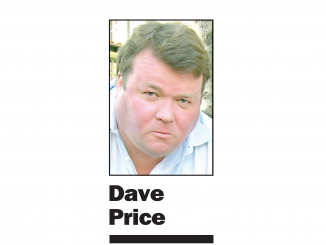
GUEST OPINION
Silicon Valley’s tech exodus is weighing California down. For California’s legislators, the solution is obvious — more housing! With some upcoming bills, state legislators are seeking to pre-empt local control and open the floodgates to no-holds-barred construction that would make California a private developers dreamland.
Cha-ching!
This will not end well. There will be more housing, but the price of housing will continue to escalate; the population will spike; and massive traffic gridlock will ensue. The Valley’s quality of life will go kaput. The mess will play out for decades as we try to fix it. In the end, we’ll give up and say “just expand into the outlier cities,” a crude method to deal with an unsustainable situation.
Two new bills, Senate Bill 9 and Senate Bill 10, are geared to push housing on to cities in California. Hundreds of billions of dollars in Silicon Valley land value are at stake. If SB9 were approved, it would allow two units within each single-family lot in your city without a hearing or environmental reviews. And with accessory dwelling units and junior dwelling units, or ADUs and JDUs, you could effectively have six families living on each of today’s lots; the population in every city could grow six times.
SB10 allows city councils to overturn voter-approved ballot initiatives that protect open space and land; essentially, it allows cities to approve 10-unit market-rate apartments almost anywhere, regardless of zoning.
Other implications of these bills:
• A DEVELOPERS’ GOLDEN GOOSE: These bills will not require developers to invest in infrastructure improvement, rather only provide bare-minimum parking, avoiding costly entitlements. How will the current infrastructure — water, sewer, gas, roads — support the increased population? Who will make the necessary infrastructure investment?
• WHERE IS THE URBAN PLAN? Population expansion should be founded upon an urban plan with the requisite associated investment. The bills include no such plan and do nothing to address the overarching issue of growth that is environmentally unsustainable. There are so many urban centers throughout the world that inevitably discover they are running out of simple necessities like water in the midst of aggressive growth. Will Silicon Valley need to ration water too — like an hour in the morning and evening?
• ACCELERATING CLIMATE CHANGE: These bills are an environmental disaster and will disrupt open space. They allow developers to circumvent Environmental Impact Reviews and setback requirements, producing an urban concrete jungle! Our yards will become history, and the permeable surfaces that replenish groundwater will disappear under the footprint of massive buildings. If our rush hour commute turns into an uber “soul-destroying” commute, won’t we exacerbate global warming, given that traffic is one of the primary causes?
• AFFORDABLE HOUSING? These bills do not mandate affordable housing nor will they create trickle-down, equitable affordable housing. It is purely a myth that if we increase housing supply, rents will drop or homes will become affordable. Are developers interested in market economics that will drop housing prices? Has this happened anywhere before?
Be careful what you wish for Sacramento. Look at the urban nightmares around the world. Do we want to wish this upon the successful economies of California?
Let us come up with pragmatic plans that will preserve and protect the good that California has enjoyed for so long.
Rishi Kumar is a Silicon Valley high-tech executive, a Saratoga city councilman and a candidate for U.S Congress for the seat currently held by Anna Eshoo.




State Senator Wiener took a lot of money from developers.
Spot on! We have seen the failure of upzoning on both sides of the Canada – Washington border. The way to address affordability without destroying our established residential neighborhoods is simply to repurpose underutilized or vacant commercial, office, or industrial buildings and land for affordable housing, using as much volunteer labor (Habitat for Humanity and/or sweat equity, perhaps?) as possible.
The (un?)intended consequence of destroying our existing stock of older, smaller, less expensive starter homes will be more people voting with their moving vans by relocating to suburbs and smaller towns, some out-of-state.
Wiener is owned by big money developers, and the disease is corporate ownership and commoditization of housing, i.e., WIMBYism (Wall $treet In My Back Yard). It is sad that the YIMBYs are too naive to see what is really going on and how this whole upzoning mess is going to backfire.
There could actually be up to 10 units on every single-family lot.
https://www.livablecalifornia.org/wp-content/uploads/2021/02/Put-on-website-RPPG_SB-9-Atkins-Analysis-As-Introduced-12.07.20_public.pdf
One of the top reasons Democrats and independents give for recalling governor Newsom his support for these bills.
It seems to me SB9 and SB10 would significantly INCREASE the value of property in Silicon Valley. A single family “tear down” home on a 0.25 acre lot in Sunnyvale may be worth ~$2 million today. Building a new 2500 sq ft home would cost another $1-1.5 million, bringing the cost to $3-3.5 million.
Hypothetically, if SB9 were passed, that lot could yield 2 duplexes @ 2000 sq ft per housing unit (2 duplexes = 4 housing units). New duplexes sell for ~$1000/sq ft in and around Sunnyvale. So the resulting value of that site would be $8 million after construction, house four families @ a still-expensive $2m per home, before considering ADUs.
Construction of those duplexes might cost $3 million, meaning if SB9 passed, a small developer could pay upwards of $4 million for that “tear down” lot and still make a profit. The original homeowner could see their lot value double from $2m to $4m with the passage of SB9.
The property taxes on that $8 million of new residential homes (nearly $90k per year) could go a long way toward paying for all the city services. City tax rolls are increasing due to the rise in housing prices, and every time the property turns over (SB9/10 would stimulate such activity), the city’s property tax roll benefits.
And where are all these family members suppose to park? It is going to look like downtown Beijing around here!
The attempted power grab by Sacramento is a joke. The current infrastructure can barely keep up with the current demand. SB9 not only allows for massive numbers of ADU’s to be put on existing lots, but they don’t take into account basic things like water, sewer and transportation. The proposal says that you have to provide one parking space per unit, but there is an exemption for properties near a transportation corridor. Cities along the Peninsula don’t have enough parking now, let alone with the addition of thousands of ADU’s.
These bills will do nothing to help northern CA workers. Instead, we need a new model. In the last year we’ve seen clear proof that the work-from-home model works. Therefore, let us now allow our younger, less affluent workforce to move to the central valley and continue to be highly efficient employees–without the burden of insanely daily commutes. We need a new model in California. This is it.
LMAO!! Great joke!
There is a new article by a tax expert that says that SB9 and SB10, if passed, will increase our property taxes in some cases.
https://www.caltax.org/2021/03/12/local-zoning-changes-may-trigger-higher-property-taxes-for-some-homeowners/
Denser housing and looser zoning sounds awesome! Where can I go to show my support for SB 9 and 10?
Because your home value would increase…
For the last 40 years, the County of Santa Cruz response to allowing any building for living space in has been one simplistic, easy answer: no, NO. and NO!!! It’s time for the state to come in and take some measures to allow at least some MODERATE increase in housing. There’s too much of the “I’ve got mine”– Sorry, we don’t want you to come here! I’m ashamed at the selfishness of many. Young people have to live somewhere. It’s about time to be just a little more generous. Boulder Creek is virtually the same now as it was when I came here in 1970, except they did build a nice library. I’ve seen virtually ZERO new homes. We could be just a little more accommodating to those who were unlucky enough to be born after us.
this is not the answer.Have you looked at how many big companies are moving ,just look at the empt office on sand Hill and in San francisco.
Our tax iasand utilities are higher than ant other state.
Amen on the need for transit systems. High speed rail would make it feasible to live in the Central Valley and commute to Silicon Valley. No one wants to take the train to LA, but thousands would use it to commute.
Wonder what a HSR trip from Palo Alto to Modesto will cost?